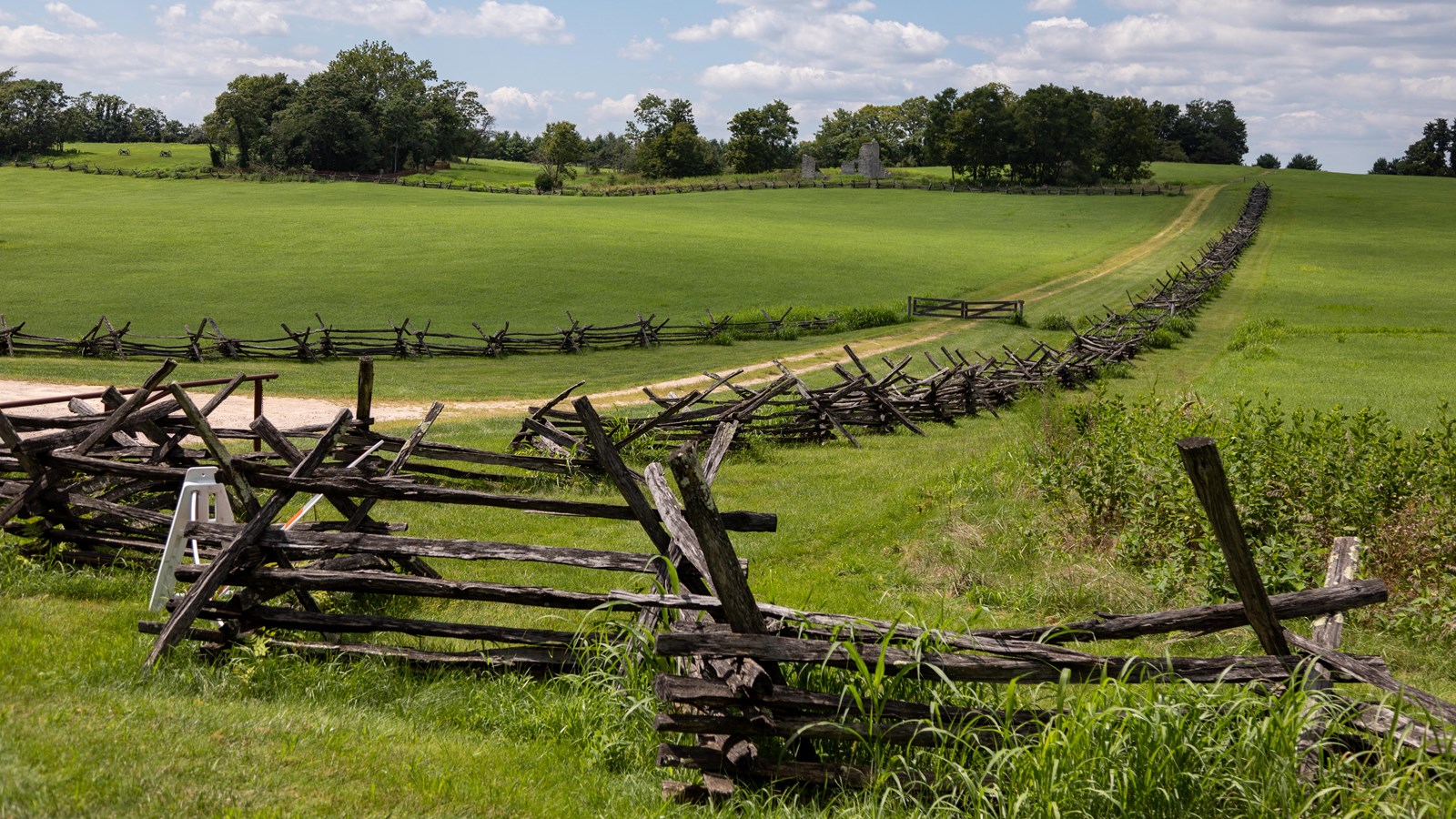Last updated: July 3, 2025
Place
Schoolhouse Ridge South

NPS / Claire Hassler
Historical/Interpretive Information/Exhibits, Restroom, Trailhead
Schoolhouse Ridge is an often overlooked and least understood topographic feature associated with Harpers Ferry's Civil War history. Until the turn of the 21st century, very little of Schoolhouse Ridge was part of Harpers Ferry National Historical Park.
Schoolhouse Ridge is parallel to Bolivar Heights and crosses the northeastern end of the Shenandoah Valley, which stretched nearly two miles. The northern edge rests along the Potomac River and the southern end reaches the Shenandoah River. The ridge is named for a one-story stone school house that stood near the Harpers Ferry-Charles Town Turnpike. This school house proved a popular rendezvous point for prowling Confederate cavalry. The ridge also became a popular target for the Union long-range cannon on Maryland Heights. The school house was destroyed during the war, reportedly by shots from the Naval Battery and the 100-pounder Battery on Maryland Heights, which is nearly 2 miles distant! Cannon from Bolivar Heights also had easy range to Schoolhouse Ridge, hampering Confederate movements anytime they reached this point.
Schoolhouse Ridge was a witness to the Battle of Harpers Ferry, September 12-15, 1862. Confederate Commander Stonewall Jackson occupied the position on Schoolhouse Ridge, along with three divisions comprising nearly 15,000 men, during the Battle of Harpers Ferry. During the night of September 14, Jackson staged a feign movement, starting on the north side of Schoolhouse Ridge, and directed toward the Union lines on Bolivar Heights. Jackson planned this as a diversion and then sent Confederate Commander A.P. Hill's men to the far southern edge of Schoolhouse Ridge and Hill launched a successful flanking maneuver along the Shenandoah River which forced the Union surrender. The informal surrender of the Union occurred on Schoolhouse Ridge when Jackson met Union commander Brig. Gen. Julius White to discuss terms.
In recent history, Schoolhouse Ridge became the focus of battlefield preservationists from 1988 to 2004. The reason for this preservation movement was because it was being threatened by high density residential and commercial development in the fastest growing county in West Virginia, at that time. Most of the battlefield was protected through the efforts of the Civil War Trust, the National Park Trust, the Trust for Public Lands, and the Federal Government. The late Senator Robert C. Byrd (D-WV) guaranteed the protection of Schoolhouse Ridge when he and the Congress expanded the park boundary in 2004.
